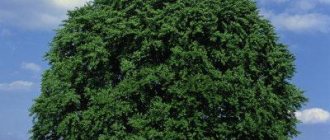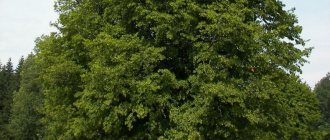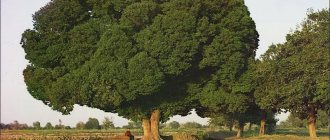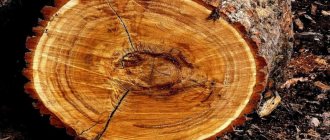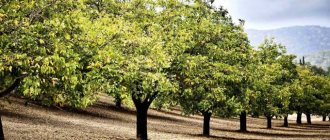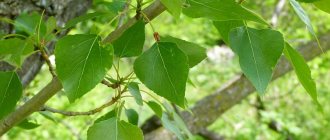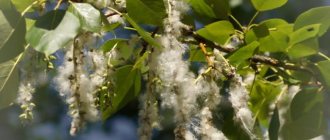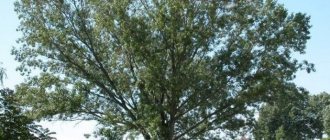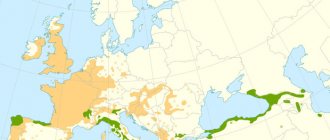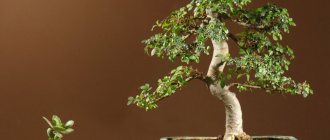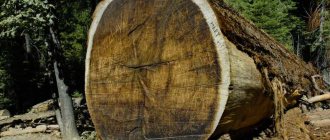Main Tomsk poplar
belongs to the genus
fragrant poplar, Siberian
(lat.
Pópulus suaveolens
) [1] - a genus of dioecious deciduous fast-growing plants of the woody type of
the willow
(
Salicaceae
).
Often they are also classified as shrubs
; poplar can grow like a willow bush.
Types of poplars
It should be especially noted that in Tomsk and in the Tomsk region, in addition to the main dominant fragrant poplar
(lat.
Pópulus suaveolens
), there are individual inclusions of poplar of the genus
silver poplar
[2], also known as
white poplar
(lat.
Pópulus álba
).
White/silver poplar is planted on the streets and in courtyards in the Ob cities, in Kolpashevo, for example. Also in the city of Tomsk and in some regional centers, since the beginning of the 20th century, botanists have planted and adapted South Russian
, pyramidal
poplars , which grow here in single copies.
Also in the science of botany to the poplar
include woody bushes
of aspen
, which is also scientifically called
trembling poplar
(lat.
Populus tremula L.
) [3].
However, this plant is called and classified as poplar
only by botanists;
in the mass consciousness of Tomsk residents, the visible large difference in the nature of the crown and leaf shape is not associated by Tomsk residents with the homogeneity of aspen
and
poplar
; they believe that these are completely different trees and no one
would call
aspen a poplar
.
Gagarin street. Poplars in early May 2006. Photo: Oleg Abramov Gagarin Street. Poplars and 2 birches. End of May 2022. Photo: Oleg Abramov Poplars on Staro-Depovskaya Street (Tomsk-II station). End of August 2022. Photo: Oleg Abramov Poplars on the street. Shishkova. End of July 2022. Photo: Oleg Abramov Shady poplar alley along Lenin Avenue near the transport hub buildings. July 2022. (Sawed down in June 2022). Photo: Oleg Abramov Poplar alley along Lenin Avenue near the TSU buildings before its destruction. May 2007. Photo: Oleg Abramov Poplar alley on Kirov Avenue boulevard before its destruction. May 2011. Photo: Oleg Abramov Golden foliage of poplars on Kirova Ave. End of October 2018. Photo: Oleg Abramov Poplars near White Lake July 2006. Photo: Evgeny Chernyshov
Description
There are approximately 100 species of poplars (the Willow family), united by the genus Populus. Translated as “people” (from Latin).
In nature, it often grows near rivers with moist soils. Poplars grew in ancient Greece.
This is one of the fastest growing trees, so it has taken root well in cities. Its unpretentiousness and survivability, where others would have died long ago, make it simply irreplaceable in polluted megacities.
Some types of poplars live up to 40 years, others up to 70-80 years. Growth slows down at the age of 50; there are old-timers - up to 150 years. Red Book Black poplars can be found for up to 400 years.
Name
The Russian word “topol” comes from the ancient Russian poplar
, and that, in turn, comes from the same proto-Slavic, pro-Aryan word.
Initially, the word was feminine, meaning a female tree. In modern Russian, the massive poplar tree, like oak, is considered a masculine word; in the plural: poplars
.
Similar sounding poplar
preserved today in all Eastern European languages:
- Russian Church Slavonic poplar
(feminine word); - Belarusian language: tapolya
,
tapoli
; - Ukrainian language: poplars
,
poplars
; - Bulgarian language: topola
; - Serbo-Croatian language: Topola
; - Slovenian language: topóla
; - Slovak language: topoľ
; - Czech: tópol
; - Polish: topola, topol
; - Upper Sorbian and Lower Sorbian: topoł
; - Lithuanian language: tãpalas
.
We can conclude that throughout the history of the development of the Russian ethnos, the tree and its verbal designation have always been present in people’s everyday lives.
Wood with special properties
Since this plant belongs to the soft tree species, the physical and mechanical properties of dry poplar wood (density not higher than 420 kg/cubic meter) are not very high.
Therefore, the priority industries for processing poplar wood are, first of all, the industries for the production of cellulose, inexpensive furniture, and a number of other areas.
As a result, poplar is used to make paper and containers for packaging, domestic matches and various artificial fabrics, kitchen furniture and handles for hoes, shovels and rakes, cutting boards for the kitchen, materials for construction.
In short, poplar is present in many areas of our lives. The world would be different without the poplar.
Spreading
Poplars grow in regions with a temperate climate, mainly in the northern hemisphere of the planet (Holarctic distribution), its range covers the space from the subtropical regions of China to the boreal zone. In North America, different varieties of poplars are distributed from Canada to Mexico. Poplar variety Populus ilicifolia
grows in East Africa and Israel.
Genus Poplar fragrant
(lat.
Populus suaveolens
) in nature has a range covering Siberia, the Russian Far East, Mongolia and the northern regions of China. It differs markedly from the poplars of European and southern parts of pre-Ural (western) Russia.
Places of growth and ecology
In nature, most species grow in river valleys and well-moistened slopes. Variety Populus tremula
In addition, it settles on salt licks and on the site of former oak and spruce forests.
The variety Poplar
(
Populus heterophylla
) can be found even on the sand dunes of Central Asia.
Tomsk genus of poplar ( fragrant poplar
-
Pópulus suaveolens
) grows on any non-monolithic soils, on pebbles and sandy soils, in rows and groves along the banks of rivers and lakes; prefers highly moist and swampy soils. At the same time, the poplar trunk “works” all summer long as a powerful water pump, pumping moisture out of the soil (significantly reducing the local swampiness of the soil) and supplying it to the very top of its crown.
In Russia, poplars are traditionally distinguished as Siberian varieties
(powerful and tall trunk, abundant crown), and the southern European regions,
pyramidal
(low main trunk and then branches stretch upward and grow in a tall bush, the crown is less abundant). The foliage of poplars is not olive (like most southern and southern European trees and shrubs), so it does not burn from open fire. Only fallen and completely dried poplar leaves could burn in fires, releasing acrid wood smoke. The fireproof crown became the basis for the mass artificial planting of poplar in the cities of the Tomsk province at the end of the 19th and beginning of the 20th centuries as a natural fireproof firewall (literally: a stone dividing wall) between houses and thus preventing the city from burning down in extensive fires, as happened with Novo-Nikolaevsk (Novosibirsk) in 1909.
In urban landscape, park and economic activities, “green construction”, poplar is usually used in single, group and alley plantings, for lining the sides of streets and roads, as well as for strengthening banks and landslide slopes.
The tree is very unpretentious; any branch buried in the soil in March is capable of becoming a full-fledged shoot of a new tree in May. In just 3-4 years there will be a full-fledged tree, which will continue its growth and expansion of the trunk and crown for several more decades. The poplar forms its own powerful circular root system, which solves two vital tasks of the tree: pumping moisture from the soil to nourish the foliage and branches of the crown, as well as to provide wind resistance to the heavy and tall trunk. Cutting off the roots of a poplar, even on one side, causes the tree to fall.
The rapid growth of poplars continues up to 40-60 years, after which it slows down. Most Tomsk Siberian poplars lived up to 120-150 years (see, for example, the alley along the former cemetery, now the space along Pushkin Street near the Sibkabel complexes and the city prison), some specimens were twice as “respectable” in age.
Mechanically damaged trunks can be affected by various fungal diseases, which results in putrefactive destruction of the trunk core and an increase in its fragility and ability to break during storms and hurricanes.
The foliage of the Tomsk poplar appears with the first primroses in the spring (the earliest tree with green foliage) and remains stable until the end of September; in the processes of phytocenosis, it processes urban carbon dioxide into oxygen for almost 5 full months of the year. All other types of Siberian deciduous trees cannot compete with poplar in this indicator. Also, each adult, mature poplar tree has such a powerful deciduous crown that it can be compared with the crowns of 2-3 birches or two dozen linden trees[4]. The first foliage on poplars, the smell of this foliage in Tomsk always meant the arrival of real spring, a complete farewell to snow until late autumn.
The city also had such an important property of poplars as collecting abundant city dust on the first sticky foliage, which forms on the streets after the winter snow melts, and then, on the first warm, dry sunny days, rises into the air.
Poplars are divided into female and male specimens, which differ in that male trees do not have seeds with accompanying poplar fluff
.
Features of the annual life cycle of the female poplar include a period of active flowering and abundant release of fluff, which is carried by the wind and settles on the ground and surfaces of building roofs. Until now, people have not figured out how to adapt this harvest of fluff to their interests.
The fading of the crown, yellowing of the foliage by the first single individual branches (yellow invasion into the green crown) begins to occur, as a rule, in the third ten days of August. The main yellowing and leaf fall of the poplar occurs from the third ten days of September to the first ten days of October; individual trees remain green until the first snow cover (late October). Poplar leaf humus is a natural and fertile nutrient medium for soil with perennial plants.
For exoticism, botanists of the Imperial Tomsk University at the end of the 19th and beginning of the 20th centuries in Tomsk grew several trees of southern Russian pyramidal poplars. They can be found today in the landscape parks of the Siberian Botanical Garden and in the space between the 1st and 2nd buildings of TSU.
Preparation of planting material and propagation
Pyramidal poplar, a photo of which confirms its tallness, is usually grown from seedlings that can be purchased at specialized nurseries. When purchasing a tree, it is important to evaluate its condition. A healthy seedling should have light bark without damage and several developed shoots. It is also worth assessing the root system of the crop. It should not contain damaged or rotten shoots.
You can also get healthy pyramidal poplar seedlings from seeds or cuttings. But these methods take a lot of time.
Growing poplar from seeds
You need to start growing poplar from seeds in late spring - early summer, when the crop begins its flowering period. Planting material can be collected both from the ground and directly from the tree.
And the reproduction process itself consists of the following stages:
- Dig up the soil, clearing it of weeds and debris.
- Add humus to the soil using 1-2 kg per 1 square meter. m. Loosen the bed and level it with a rake.
- Distribute the collected boxes evenly over the soil surface. They can also be planted in rows. But in any case, you cannot bury the seeds, otherwise they will not sprout.
- Gently spray the planting with warm water from a spray bottle. It is advisable to cover the planting material with a transparent film for 5-7 days.
- Spray the soil with warm water, keeping it moist.
The first shoots will appear on day 8-9. When the seedlings grow to 5-7 cm in height, the planting should be thinned out, leaving the strongest and healthiest plants. At the same time, a distance of 10-15 cm should remain between them. The seedlings must be watered periodically and planted in a permanent place in September.
Growing poplar from cuttings
It is better to start this activity in early spring, before the buds open. For propagation, it is better to use annual shoots located at the ends of powerful and healthy branches. Also follow the area for planting, thoroughly loosening the soil and removing weeds and debris.
The process itself should be carried out according to the following algorithm:
- Cut the selected shoots into cuttings 15-20 cm long. It is important that each piece has about 3-5 healthy buds.
- Water the soil generously with warm water.
- Plant the cuttings vertically so that the bud is level with the ground. At the same time, it is advisable to deepen the shoots to at least ¼ of their length. Maintain a distance of 50 cm between branches.
- Cover the planting with agrofibre for the first time.
Plant care consists of regular watering, which should be done as the top layer of soil dries. When the cuttings take root and reach a height of 15-20 cm, watering must be reduced.
Biological features
Large poplar trees in Tomsk reach a height of 27...35 m, while the trunk diameter can be (at the age of 100 years) more than 1-1.5 meters. The crown is tent-shaped. The trunk bark is fissured, brownish-gray or dark gray with a brown tint; the bark of the branches is smooth and brown.
The root system of a tree (tree bush) is strong, branched, but mostly superficial, extending far beyond the crown projection.
The buds are oblong-ovate, sharp, 1-2 cm long, sticky.
Leaves are petiolate, alternate, glabrous or pubescent, from lanceolate to broadly ovate, rounded or broadly wedge-shaped at the base, gradually pointed towards the ends; the shape of the leaf depends on the shoot on which it is located and on the position on this shoot; the edges are finely crenate-serrate; the leaf blade of the shoots is narrow, lanceolate-deltoid; branches - ovate or oblong-ovate, 6-15 cm long (mainly 12 cm), 2-7 cm wide.
The plant is dioecious, blooms with burgundy sticky catkins before the leaves appear or simultaneously with them; The ability to bear fruit occurs at 10-12 years. Earrings are sparse; bracts fringed-incised, glabrous or weakly ciliated, ovoid or almost round, 3-5 mm long.
The flowers are collected in cylindrical, erect or pendulous inflorescences - catkins (spike-shaped racemes), which fall off after flowering. Each flower in an catkin develops in the axil of a palmately dissected bract; above which is the so-called disk
, saucer-shaped or goblet-shaped in pistillate flowers and lamellar in staminate flowers. The ovary is single, with 2-4 sessile lobed stigmas. Stamens number 60-65; anthers purple; stigmas broad-lobed: ovary up to 6 mm long, barbed-glabrous.
The fruit is a single-locular capsule, opening with 2 (less often, 4) valves. The seeds are small, oblong or oblong-ovate, black or black-brown, 1-3 mm long, at the base they have a tuft of numerous fine silky hairs (“ poplar fluff”)
"). There are more than 1,000 seeds in 1 gram.
In Tomsk, the tree blooms at the end of April, but most often in May (in June during a cold, protracted spring). Fruiting occurs in June-July; in observations of the 20th century, fluff most often occurred in July.
The wood differs in its greenish tint from aspen and other types of poplars. Not used for firewood, interior decoration and is not a floating material.
What would Dr. Galen say?
Buds and greens contain pharmacologically active compounds useful for humans. And species such as black poplar and common poplar generally belong to medicinal plants.
They contain a whole range of biochemical compounds beneficial to human health. Among them are glycosides and essential oils, gums and resins, various organic acids and other substances.
The famous “salicylic” acid, as well as “populin,” are separated from the poplar buds collected in April. They are used in pharmacology to create antipyretic, anti-inflammatory and antimicrobial drugs.
These medications not only reduce pain effects, but also stimulate the activity of the gastrointestinal tract and liver. They can improve the functioning of a person's lungs.
Poplar is also used in “folk medicine”, where it is recommended to use bud decoctions for a number of diseases. Among them are intestinal diseases and pneumonia, cystitis and bronchitis, hemorrhoids and nephritis, stomatitis and many other ailments.
Useful “poplar water” even for people who want to quit smoking. It is also interesting that extract from poplar buds is an integral part of some anti-dandruff shampoos.
Poplar groves and alleys in Tomsk
Main massifs, continuous spaces with poplar trees, poplar groves
, by the end of the 20th and the very beginning of the 21st centuries in Tomsk the landscape spaces of the Camp Garden and the Burevestnik TPU stadium complex, squares near the TPU buildings, University Grove, Mikhailovskaya Grove, parks "City Garden" and "Buff Garden", boulevards throughout the length of Kirov Avenue and along TSU on Lenin Avenue, parks near the railway. stations "Tomsk-I", "Tomsk-II" and "Tomsk-Severny", boulevards on the territory of the Northern town (and along Pushkin street near the GPZ-5 plant), city cemeteries "Yuzhnoye", "Severnoye" and "Baktinskoye" , along the entire length of the street. Dzerzhinsky, LPK squares on the street. 5th Army, public gardens in the villages of Sosnovy Bor and TOKB, Solnechnaya Dolina park, Akademgorodok “springboard” park, sanitary protection groves at the end of Frunze Ave. near TTU and U, as well as in many other places in the city.
Poplar alleys have become a necessary element of landscaping around stadiums and sports complexes, including Trud, Lokomotiv, Motor, Manometer, Yunost, Voskhod, Temp, Burevestnik (TPU), " sports complex TSU", "sports complex TGASU", "sports complex TSPU", etc.
It should be noted that the founders of botanical science at the First Siberian Imperial Tomsk University (Prof. P.N. Krylov and others) began, at one time, to actively cultivate the planting of poplars along the roads and streets of Tomsk for two reasons:
- the city was a merchant city, mostly built up with fire-hazardous two-story mansion houses of local merchants; To prevent the city from burning out in a big fire (as happened in Novo-Nikolaevsk in 1909), the poplars between the houses became a natural firewall, a fire wall that prevented the fire from spreading from house to house (the living poplar itself and its foliage are absolutely non-flammable );
- the city stood on swampy, undrained areas, which created a lot of inconvenience; poplar, like a pump, pumps out all excess moisture from the soil, eliminating waterlogged areas.
Thanks to their activities and the active participation of students and city residents in planting poplars throughout the 20th century, the city in the 1970s was considered the greenest, most environmentally friendly in the Soviet Union.
Preparing the soil and planting site
Pyramid poplar is an unpretentious species. But in order for the tree (photos of seedlings are given in the article) to develop faster, it is worth planting it in a lighted open area. And it is better to choose a place with loose, fertile soil with a neutral or slightly acidic reaction, since plant growth slows down in clayey, heavy soils.
You can prepare the substrate by mixing the following components in equal parts:
- garden soil;
- peat;
- sand.
When choosing a location, it is worth considering that the roots of the poplar grow strongly. So the tree should be planted 40-50 m from buildings.
Literature
- Populus // Botanical dictionary / comp. N.I. Annenkov. - St. Petersburg: Printing house of the Imperial Academy of Sciences, 1878. - XXI + 645 p.
- Poplar // Encyclopedic Dictionary of Brockhaus and Efron: in 86 volumes. (82 tons and 4 additional). - St. Petersburg, 1890-1907.
- Poplar // Small encyclopedic dictionary of Brockhaus and Efron: in 4 volumes. - St. Petersburg, 1907-1909.
- Komarov V.L.
Genus 357. Poplar - Populus L. // Flora of the USSR [in 30 volumes] / ch. ed. V.L. Komarov. - ; : Publishing House of the USSR Academy of Sciences, 1936. - Volume 5 / volume editor V.L. Komarov. — P. 216—242. - 762, XXVI p. - Sokolov S.Ya., Shipchinsky N.V., Yarmolenko A.V.
Genus 3. Populus L. - Poplar // Trees and shrubs of the USSR. Wild, cultivated and promising for introduction. / Ed. volume S.Ya. Sokolov. - ; : Publishing House of the USSR Academy of Sciences, 1951. - Volume II. Angiosperms. — P. 174—217. — 612 s.
Benefit
Poplars are better than other trees at purifying the air from gas and smoke. These abilities plus their rapid growth make them a favorite in urban landscaping. In addition, poplar wood is in great demand: it is used in the production of artificial silk, paper, containers and furniture, and it is also used in the production of fiberboard, chipboard and laminate.
Paint is made from poplar buds and leaves.
Notes
- Some experts classify Tomsk and main Siberian trees as trees of other poplar genera. [1] A number of botanists consider the Tomsk mass poplar to belong to the genus Balsam Poplar
(lat.
Pópulus balsamifer
) - see, for example, the reference book
Olonov N.A., Olonova M.V.
Plants of the Tomsk region.
Trees, bushes, shrubs. - Tomsk: Publishing House "Printed Manufactory", 2009. - 64 p. — P. 16-17. Electronic resource
: ogbu.green.tsu.ru.
Balsam poplars
are, after all, plants native to North America (USA and Canada).
[2] There are references (see page 27) that in Tomsk the predominant poplar belongs to the genus Black Poplar
, also known as
poplar-sedge
(lat.
Populus nigra L.
), which was known to Russian settlers to Siberia coming from the regions Central Russia.
[3] The main group of Tomsk and Russian botanists agrees that in Tomsk there are trees belonging to the genus Poplar
(lat.
Pópulus suaveolens
). - Krylov P.N.
Flora of Altai and Tomsk province. Guide to identifying plants of Western Siberia. Vol. VII: Graminiae Salviniaceae. - Tomsk: Typo-lithography of the Siberian Printing Partnership, 1914. - 64 p., ill., maps. - This woody plant is well described in the book of the famous Tomsk phenologist V.G. Rudsky: Rudsky V.G.
Excursions into nature.
Tomsk through the eyes of a phenologist. - Tomsk: Publishing House "Printed Manufactory", 2012. - 44 p. — ISBN 978-5-94476-257-3. — P. 26-27. — Electronic resource
: ogbu.green.tsu.ru. - In the conditions of Tomsk, linden trees produce foliage by mid-June and already in mid-August the foliage falls off under the influence of the first autumn cold.
Possible diseases and pests, ways to get rid of them
The pyramidal poplar, the photo of which is presented in the article, does not have absolute immunity. And it can be affected by diseases and pests. Moreover, young seedlings with a poorly developed root system suffer from them more often.
The most common diseases and pests of poplar:
| Name | Symptoms | Fighting methods |
| Brown spot | A fungal disease in which round brown spots with white dots in the middle form on the leaves. Over time, the lesions increase in size, merge, and lead to the death of foliage. | For treatment next spring, before the buds swell, the poplar needs to be treated with 3% Bordeaux mixture. Spraying should be repeated when the leaves bloom and after another 2 weeks. But this time you need to use 1% Bordeaux mixture. |
| Gray spot | A fungal disease that causes light gray spots with a brown center and brown rims to form on the leaves. | In early spring, before the buds swell, spray the tree with Bordeaux mixture or copper sulfate. Repeat treatment when leaves bloom. |
| Rust | A fungal disease in which raised orange growths form on the leaves. The disease greatly weakens trees, especially young ones, and reduces their decorative value. | At the first signs of disease, spray the tree with Bordeaux mixture (1%). You can also use fungicides "Skor", "Fitosporin". Spraying must be repeated until complete cure at intervals of 14 days. |
| Scab | A fungal disease that often develops in midsummer. When infected, brown spots with a purple tint form on the leaves. Later they become covered with a velvety olive-colored coating. Young branches dry out and die. | At the first symptoms, you need to remove the affected branches. Spray the crown with systemic fungicides such as Fitosporin, Fundazol, Skora. In early spring, to prevent poplar, treat it with Bordeaux mixture. |
| Powdery mildew | When affected, the leaves have a gray felt coating on all sides. Over time, it turns white and acquires a mealy consistency. The disease interferes with photosynthesis and reduces the decorative qualities of the crop. | In early spring, trees must be treated with 3% Bordeaux mixture. In summer, it is advisable to repeat spraying using a systemic fungicide with copper (“Hom”, “Oksikhom”, “Abiga-Pik”). |
| spindle gall midge | A small insect that resembles a mosquito. Its orange larvae infect seed pods and feed on unripe seeds. Because of this, the fruits swell, become spherical, and almost colorless. Pests weaken the plant, reducing its decorative value. If severely damaged, it can lead to death. | To prevent gall midges, poplars should be treated in early spring with the insecticides Fufanon or Decis. If trees are damaged by pests, you will need to remove all branches with galls, smearing the cutting areas with garden varnish with the preparation “Hom” (20 hectares per 1 package). |
| Poplar leaf beetle | A brown-red beetle that feeds on tree leaves. It can also damage young shoots. | If pests are detected, trees should be treated with insecticides “Aktara”, “Aktellik”, “Fufanon”. |
| Sawfly | A beetle with a black head and thorax, and a yellow abdomen. Its larvae feed on the leaves of the tree, which leads to its weakening and reduced decorativeness. | To destroy pests, you will need to spray the trees with insecticides “Karbofos”, “Aktara”, “Decis”. The treatment should be repeated after 7-14 days. For prevention, it is important to dig up the soil in the tree trunk circle in the spring. |
Trees and shrubs in autumn. Autumn changes. Why do leaves turn yellow and fall off?
Search results for: What color are poplar leaves in the fall. What kind of leaves does a poplar have in autumn? What color are poplar leaves in autumn? I urgently need white and silver poplar - poplar leaves, photo in autumn.
Mail replies. Color of poplar leaves in autumn - free articles in the Journal Description of black poplar: buds, leaves, seeds.
Poplar blossom. What color are the leaves of aspen and poplar in the fall? Poplar leaves in autumn description.
Why do leaves change color in autumn?
Poplar leaves in autumn description - dachuvopros. Our old friend poplar. What color are the autumn leaves of poplar? My garden and vegetable garden. Poplar Leaves Photo - Download Free Images - Pixabay.
Autumn poplar leaves photo! Leaf color. Poplar leaves in autumn description - Summer resident's guide. What kind of leaves does a poplar have in autumn? Description.

